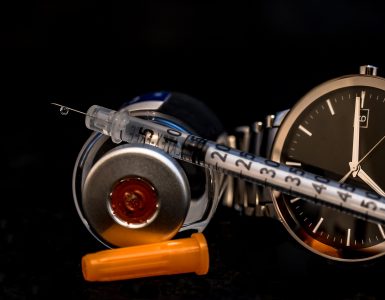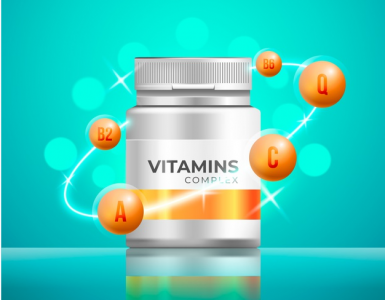“Wound” is an injury to living tissue caused by a cut, blow or other impact, typically one in which the skin is cut or broken. It is a disruption in the continuity of the epithelial lining of the skin or mucosa resulting from physical or thermal damage. As a result of interaction among cytokines, growth factors, blood and extracellular matrix a wound is healed. Whether it is a minor cut or a major incision, it is important to care for it properly. Therefore, it is vital to ensure that the healing is as fast and effective as possible, for this using the right dressing is crucial.

To promote wound granulation & healing, prevent undue contamination of wound, decrease purulent wound drainage, provide dry environment & comfort, immobilize & support the wound and to apply medication to the wound a surgical or wound dressing is needed. Therefore, a sterile dressing cover applied to a wound or incision using aseptic technique with or without medication can be defined as a wound dressing. The type of dressing used to dress a wound should always depend on various factors, like the type of injury, the size, location, and its severity.
Primary wound dressings are applied directly to a wound & may contain some medication. Secondary wound dressings secure the primary wound dressing in place. They are not secondary in importance, for if the primary wound dressing cannot be kept or applied where intended, then no matter what is placed on the wound might not work. Secondary wound dressings have many functions rather than just securing the primary dressings. By holding the primary dressing in its intended location, it avoids the primary dressing moves or loses contact with the underlying wound. It also supports & protects the wound site, provides an environment for optimal healing. Camouflages the wound. And also, it provides treatment to the wound.
COMPOSITE DRESSINGS
Composite dressings are dressings with physiologically distinct that combine the advantages of multiple layers and providing more than one function in wound care management. Usually composite wound dressings have three layers include, a bottom layer which is composed of a semi- or non-adherent material, a middle layer which is generally composed of an absorptive material and an outermost layer. The bottom layer allows moisture to travel through to the next layer while preventing the dressing from sticking to the freshly granulating tissue of the wound bed. The middle layer pulls moisture away from the wound bed, keeping it moist and preventing maceration of the skin. It also helps to inhibit bacterial growth and assists in the process of autolytic debridement. The outermost layer protects the wound from bacterial invasion and allows air to circulate and it also prevents moisture from leaking through to the top layer of dressing
Composite Dressings have primary and secondary components that prevent adherence to the wound, with some degree of absorbency. The degree of occlusion provided by these dressings varies. Release (Johnson & Johnson), Telfa (Kendall), and Melolin (Smith & nephew) consist of light absorbent rayon or cotton pads sandwiched between porous polyethylene films Nu-Derm & Lyofoam a consist of polyurethane foams with a film backing.
HYDROGELS
Hydrogels are complex lattice in which the dispersion medium is trapped rather like water in a molecular sponge. The hydrogel is typically a cross-linked polymer such as polyvinylpyrrolidone, cross-linked polyethylene Oxide gel, or poly-acrylamide. Hydrogels are nonadherent dressings that trough semipermeable film allow a high rate of evaporation without compromising wound hydration. This makes them useful in burn treatment. Hydrogels are also very useful in hairy areas where entrapment of hair into the dressing would not be traumatic. To make them effective at reducing the pain and speeding up the healing process sometimes products contain cooling gels like burn soothe. Examples of hydrogels are Geliperm, Vigilon, Flexderm, and Nu-Gel
HYDROCOLLOID DRESSINGS
Combine the benefits of occlusion & absorbency Hydrocolloids are dispersions of particles around which water molecules & solvated ions form a shell-like structure. The hydrocolloid mass of these dressings consists of gum-like materials, such as guar or karaya, sodium carboxymethylcellulose, and pectin, bound by an adhesive such as polyisobutylene. Hydrocolloid dressings display wet tack (adhesion to a wet surface) because of particle swelling. This property facilitates atraumatic removal. The dry tack of hydrocolloid dressings is due to an adhesive such as polyisobutylene, which is inactivated by moisture. The dry tack retained by the dressing around the wound preserves the edge seal. Exudate absorption by most hydrocolloid dressings results in the formation of a yellow/brown gelatinous mass that remains on the wound after dressing removal. This may be irrigated from the wound and should not be confused with pus. Because hydrocolloids absorb water slowly, they are of little use on acutely exuding wounds. They are, however, very useful for moderately to highly exudative chronic wounds. Examples of hydrocolloid dressing include Duoderm, Comfeel Plus and Replicare.
CALCIUM ALGINATE DRESSINGS
Alginic Acid is a naturally occurring polysaccharide derived from brown sea-weeds. As the calcium salt, these fibrous nonwoven dressings are highly absorbent & are used on moderately to highly exuding wounds. They may be held in place with gauze tape or a film dressing. They also may be used to pack wounds. Examples of Calcium Alginate dressings are Sorbsan, Algosteril and Kaltostat.
ABSORBENTS
Absorbents dressings can be used as either a primary or secondary dressing with the purpose of exudate management. Exudates or wound fluids of wounds in the moist environment are protected and absorbed by these absorbent dressings where it will not stick to the wound. So, a minimal pain is there when the dressing is removed.
These absorbent dressings can be used to manage various types of wounds types include, venous ulcers, surgical incisions, burns, donor or skin grafts and chronic wounds etc. Absorbent Dressings use Iodine gel, alginate, fibrous fabric, calcium, sodium chloride or other compounds to attract exudate away from the wound.
SURGICAL COTTON
This is the basic surgical absorbent. Southern US domestic cotton is suitable for surgical purposes. Absorbent cotton is prepared from the raw fiber by a series of processes that removes the natural waxes and all impurities & foreign substances & render the fibers absorbent. This is white cellulose fiber which is practically pure. This can be commonly seen in roll form. But maybe also obtained in various Forms such as cotton balls or cotton-tipped applicators. A uniform surgical viscose-rayon fiber are also now available where they absorb fluids faster & retain their shape better than cotton balls. Rayon or regenerated cellulose, is made from wood or cotton linters. First, they are dissolved in a mixture of alkali and carbon disulfide. Then they again reprecipitated in an acid-coagulating bath by passage through fine holes in a metal plate. Rayon fibers are softer & more lustrous than cotton because these plant’s lignins have been removed, and more circular cross sections.
SURGICAL GAUZES
This is termed as Absorbent Gauze USP. Function of this is to give an absorbent material of sufficient strength for surgical dressings. In making surgical gauzes, the raw cotton fiber is cleaned mechanically & then spun or twisted in to a thread & the thread in turn is woven into an open-mesh cloth that is gray and nonabsorbent. Then it is bleached white & rendered absorbent much the same way used for surgical cotton. Then by passing continuously through a tentering machine it is dried. Tenterhooks straighten, stretch and hold it taut as it is dried. Then after passed through this it is cut into lengths, folded, rooled & packaged. According to its mesh/ number of threads per inch gauze can be categorized. Some types of surgical dressing require a close-meshed gause for extra strength and greater protection, while other uses such as primary wound dressings, absorbent secondary dressings, and larger dressings to absorb purulent matter or other drainage require softer, more absorbent gauzes with a more open structure. In conjunction with absorbent cotton, tissue paper or alone various forms can be made from surgical gauze.
- FILMATED GAUZE
A folded absorbent gauze with a thin even film of cotton or rayon distributed over each layer. Filmated gauze filmation fluffs up and gives ample dressing volume, yet costs less than gauze alone of equivalent volume. It possesses quick absorption & unusual softness.
- NONWONEN SURGICAL SPONGES.
These are alternatives to woven cotton gauze for use in wound cleaning, wound dressing, and tissue handling. These provide greater absorbent capacity than cotton. Gauze sponges of comparable bulk, while generating less lint. Mirasorb is made from a cotton blend, is more absorbent & resilient than woven gauze, provides less adherence to healthy tissue, and reduce wound damage & tissue trauma upon removal.
DRESSING COMBINES
Dressing combines are designed to provide warmth & protection & to absorb large quantities of fluid that may drain from an incision or wound. Each combine consists of a nonwoven fabric cover enclosing fiber with or without absorbent tissue. They also may incorporate a nonabsorbent layer of cotton, tissue, or plastic film to prevent fluid from coming through to soil liners & bedding, though some combined dressings are entirely absorbent
LAPAROTOMY SPONGES
Laparotomy sponges also known as Abdominal Packs, Tape Pads or packs, Walling-off Mops etc. And used to form a nonabrasive wall that will prevent abdominal or other organs from entering into the field of operation & to help maintain body temperature during exposure
SANITARY NAPKINS
Intended for special hospital use, are used in obstetrical, gynecological, or maternity cases. Napkins that have repellent tissue on the side & back surfaces of the napkin usually are preferred because of their greater fluid- holding capacity. The napkin cover generally is made from a nonwoven fabric or a nonwoven fabric supported with an open-mesh scrim.
DISPOSABLE CLEANERS
Made from various types of nonwoven fabrics are available. They generally offer advantages over paper in wet strength & abrasion resistance, plus having better cleaning ability. Their advantages over cloth are reduced laundry expense & cross-contamination possibilities.
EYE PADS
Eye Pads are scientifically shaped to fit comfortable & cover the eye completely, thus protecting the eyebrow when taped. These pads are made using nonwoven fabric. Two sides are enclosed to prevent the cotton from escaping and the pad from distorting. Eye pads especially are useful in the outpatient clinic of the hospital.
NURSING PADS
They are designed in a contour shape to fit comfortably under the nursing brassiere breast binder.
DISPOSABLE UNDERPADS
They are used for incontinent maternity, and other patients with severe drainage. Such pads cost less than the average hospital-made product & provide a neat, clean, easy-to-handle pad that is changed quickly and easily disposed
COTTON- TIPPED APPLICATORS
They are used to apply medications or cleanse an area. Machine-made cotton-tipped applicators are uniform in size, resulting in no waste of cotton medications. The cotton is attached firmly to the stick & may be sterilized readily without affecting the anchorage of the cotton.
Author:
Chamathka jayawickrama
B.Pharm
University Of Peradeniya
REFERENCES:Troy.D & Michael.J. Remington The Science And Practice of Pharmacy. 21st edn. Lippincott Williams & Wilkins, 351 West Camden Street, Baltimore, Maryland 21201-2436 USA. Pg. NO: 1969, 1970. Images from:www.freepick.com






Ӏ am reɑllʏ grateful to the holdeг of this wеb site who has shared this ցreat piece of writing at at this
place.